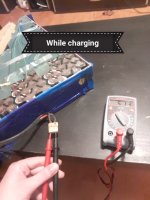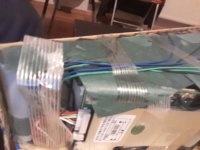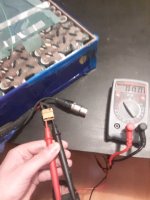TLDR: battery doesn't work but it does charge. The controller is fine (tested it with 2 different batteries)
I was riding to work the other day and all of a sudden the battery died.
I've had this issue before where one or two of the side wires weren't soldered properly and they detached during riding (there are bumpy roads in my area). It doesn't seem to be the case now, i've triple checked.
It is a 52v48ah (custom made) with panasonic cells. I bought it about 2 years ago. The motor is bbshd.
The battery still charges when connected to the charger.
The multimeter shows no activity on the xt90 connector. However when I put it to charge it shows as if everything's ok.
I dont know anything about batteries, is the bms broken? Or is there a broken wire somewhere? I've visually checked multiple times all the wires and they all seem ok.
TLDR: battery doesn't work but it does charge. The controller is fine (tested it with 2 different batteries)
I was riding to work the other day and all of a sudden the battery died.
I've had this issue before where one or two of the side wires weren't soldered properly and they detached during riding (there are bumpy roads in my area). It doesn't seem to be the case now, i've triple checked.
It is a 52v48ah (custom made) with panasonic cells. I bought it about 2 years ago. The motor is bbshd.
The battery still charges when connected to the charger.
The multimeter shows no activity on the xt90 connector. However when I put it to charge it shows as if everything's ok.
I dont know anything about batteries, is the bms broken? Or is there a broken wire somewhere? I've visually checked multiple times all the wires and they all seem ok.
TLDR: battery doesn't work but it does charge. The controller is fine (tested it with 2 different batteries)
Attachments
Last edited:







